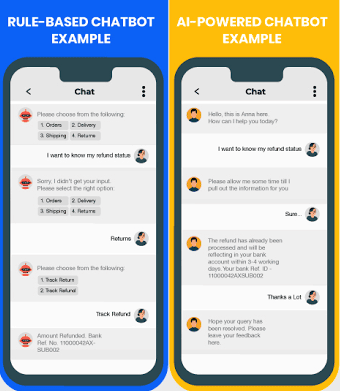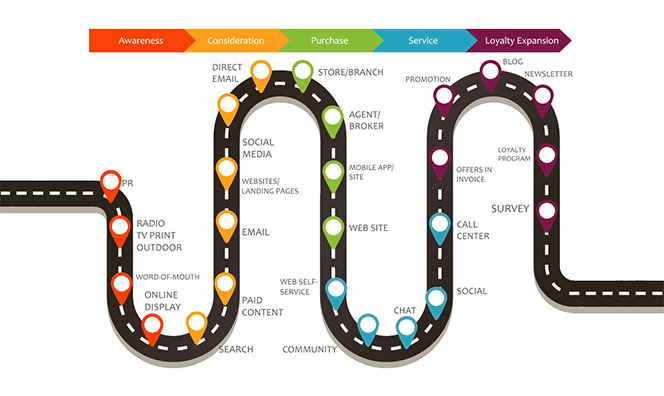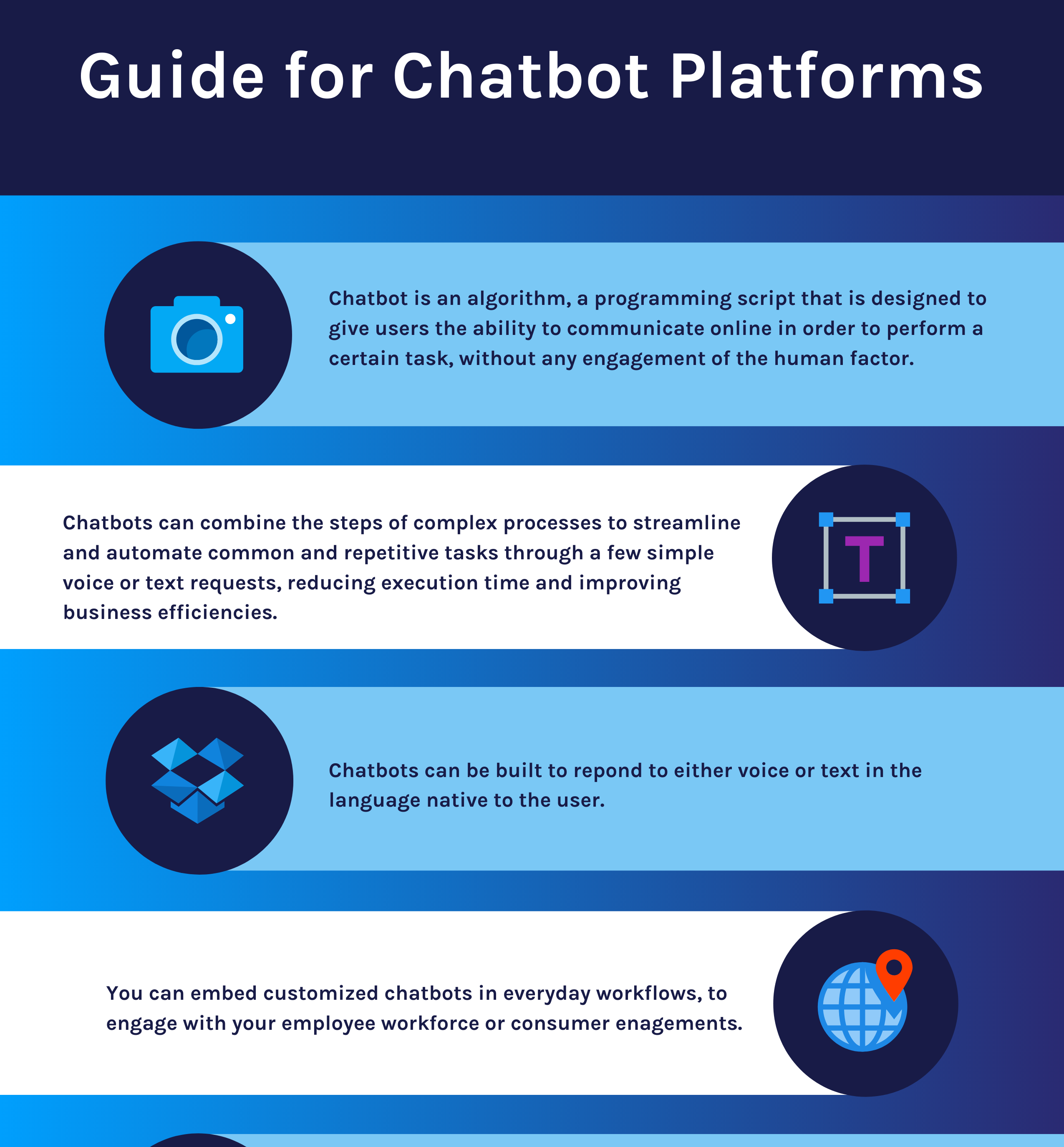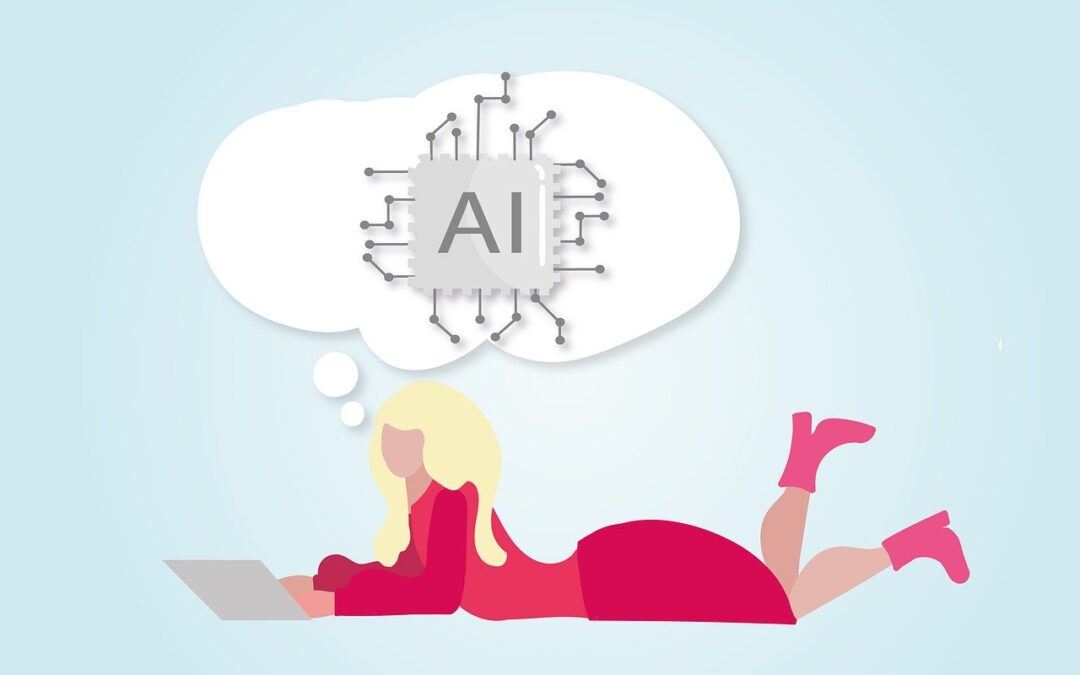In today’s competitive business landscape, staying ahead requires constant innovation and improvement. This is why the “B2B chatbot training for Ensuring Continuous Improvement Through Customer Feedback” was developed. This comprehensive training program equips businesses with the tools and strategies needed to utilize chatbots effectively, gather valuable customer feedback, and implement necessary improvements. By leveraging the power of chatbots and customer insights, businesses can enhance their operations, strengthen customer relationships, and ultimately achieve long-term success.
1. Importance of B2B Chatbot Training
1.1 Enhancing customer experience
In the increasingly competitive B2B market, providing an exceptional customer experience is crucial for businesses to thrive. B2B chatbots play a vital role in this by offering instant support and personalized interactions. However, without proper training, chatbots may not deliver the desired user experience. Training B2B chatbots enables them to understand customer requirements and provide relevant solutions promptly, leading to enhanced customer experience.
1.2 Increasing customer satisfaction
Customer satisfaction is the cornerstone of a successful B2B relationship. By investing in comprehensive chatbot training, businesses can ensure that their chatbots are equipped to handle customer inquiries efficiently, thereby increasing overall customer satisfaction. Well-trained chatbots can effectively address customer concerns, provide accurate information, and offer personalized recommendations, leading to improved satisfaction levels.
1.3 Boosting efficiency and productivity
B2B chatbot training plays a crucial role in bolstering the efficiency and productivity of businesses. When chatbots are trained to handle specific tasks and queries, they can streamline processes and provide quick resolutions, eliminating the need for human intervention in routine tasks. This not only saves time but also allows human employees to focus on more complex and strategic activities, ultimately boosting overall efficiency and productivity.
1.4 Improving response accuracy
Response accuracy is vital when it comes to B2B chatbot interactions. Users expect accurate and relevant responses to their queries. Through proper training, chatbots can understand user intent, context, and underlying requirements, enabling them to provide accurate and meaningful responses consistently. Improved response accuracy not only enhances the user experience but also helps build trust and credibility with customers.
1.5 Reducing errors and miscommunication
Miscommunication can lead to frustration and dissatisfaction among customers. B2B chatbot training focuses on minimizing errors and miscommunication by fine-tuning natural language processing (NLP) capabilities. Training chatbots to understand user input correctly and respond appropriately helps reduce misunderstandings and ensures effective communication. By reducing errors and miscommunication, businesses can enhance customer satisfaction and strengthen their overall brand reputation.
2. Customer Feedback as a Crucial Asset
2.1 Understanding the value of customer feedback
Customer feedback serves as a valuable asset for businesses. It provides insights into customer preferences, pain points, and expectations. By actively seeking and analyzing customer feedback, businesses can gain a deeper understanding of their target audience, identify areas for improvement, and make informed decisions to enhance their products or services. B2B chatbot training can greatly benefit from leveraging customer feedback to continuously improve the chatbot’s performance and meet customer expectations.
2.2 Identifying areas for improvement
Customer feedback acts as a guiding compass, helping businesses identify areas for improvement in their chatbot interactions. By monitoring and analyzing customer feedback, businesses can pinpoint specific pain points and address them through targeted training. Whether it is improving response accuracy, enhancing the chatbot’s knowledge base, or refining the chatbot’s conversational skills, customer feedback provides valuable insights that enable businesses to make the necessary improvements.
2.3 Enhancing chatbot performance
Customer feedback acts as a catalyst for enhancing chatbot performance. By actively incorporating customer feedback into chatbot training, businesses can identify common issues or limitations faced by customers and tailor training programs accordingly. This iterative approach enables businesses to continuously refine the chatbot’s capabilities, resulting in a more efficient and effective tool for customer support and engagement.
2.4 Building customer trust and loyalty
Customer trust and loyalty are crucial in the B2B landscape. By utilizing customer feedback to improve chatbot interactions, businesses can build trust and loyalty among their customer base. When customers see that their feedback is valued and acted upon, they are more likely to develop a sense of trust in the chatbot’s abilities and the overall brand. This trust leads to increased customer loyalty, repeat business, and positive word-of-mouth referrals.

This image is property of assets-global.website-files.com.
3. Incorporating Customer Feedback into B2B Chatbot Training
3.1 Collecting customer feedback
Collecting customer feedback can be done through various channels, such as online surveys, feedback forms, social media platforms, and direct customer interactions. It is essential for businesses to establish systematic processes for collecting feedback to ensure a steady flow of valuable information. By actively encouraging customers to provide feedback on their chatbot interactions, businesses can gather insights that will drive training improvements.
3.2 Analyzing and interpreting feedback data
Collecting feedback alone is not sufficient – it is equally important to analyze and interpret the data effectively. By employing analytical tools and techniques, businesses can gain meaningful insights from customer feedback data. Analyzing data trends, identifying recurring issues, and categorizing feedback based on different aspects of chatbot performance are essential for formulating targeted training strategies.
3.3 Identifying patterns and trends
Customer feedback data often reveals patterns and trends that can guide chatbot training efforts. By analyzing the feedback data, businesses can identify common issues, frequent pain points, or areas where the chatbot may be struggling to provide satisfactory responses. Identifying these patterns and trends helps businesses prioritize specific training areas and allocate resources effectively for maximum impact.
3.4 Prioritizing feedback-based improvements
Once patterns and trends have been identified, businesses can prioritize feedback-based improvements. By categorizing feedback into high-priority and low-priority areas, businesses can allocate resources and design training programs accordingly. This ensures that the most critical areas for improvement are addressed promptly, further enhancing the chatbot’s performance and customer experience.
4. Designing Effective B2B Chatbot Training Programs
4.1 Setting clear training goals and objectives
Before designing chatbot training programs, it is essential to establish clear goals and objectives. Businesses should determine what specific outcomes they want to achieve through the training, such as improving response accuracy, optimizing task completion time, or enhancing the chatbot’s conversational skills. Setting clear goals and objectives helps guide the training program and ensures that it is aligned with the overall business objectives.
4.2 Creating realistic training scenarios
To ensure effective training, it is crucial to create realistic training scenarios that simulate real-life customer interactions. By designing training scenarios that mimic typical B2B conversations, businesses can expose chatbots to realistic challenges and enable them to learn from experience. Realistic training scenarios help chatbots understand context, intent, and the intricacies of B2B jargon, ultimately improving their performance.
4.3 Utilizing interactive and engaging training methods
Incorporating interactive and engaging training methods is vital to keep the chatbot training program dynamic and interesting. Businesses can utilize interactive exercises, quizzes, and simulations to actively involve chatbots in the learning process. Engaging training methods not only help the chatbot retain information more effectively but also make the training experience more enjoyable for the human trainers involved.
4.4 Simulating real customer interactions
Simulating real customer interactions is a crucial step in B2B chatbot training. By exposing chatbots to a variety of customer inquiries and scenarios, businesses can help them develop the skills and knowledge needed to handle real-life situations. Simulations allow chatbots to practice and refine their responses, ensuring that they can deliver accurate and appropriate information when engaging with actual B2B customers.
4.5 Incorporating real-time feedback during training
To maximize the effectiveness of chatbot training, businesses should incorporate real-time feedback during the training process. Providing immediate feedback to the chatbot based on its responses helps reinforce desired behaviors and correct any deviations or errors. Real-time feedback enables chatbots to learn from their mistakes, enhance their performance, and fine-tune their responses to better meet customer expectations.

This image is property of cdn-cmdga.nitrocdn.com.
5. Ensuring Continuous Improvement through Iterative Training Processes
5.1 Monitoring chatbot performance after training
It is essential to monitor chatbot performance after training to assess the effectiveness of the training program. By tracking key performance indicators (KPIs) such as customer satisfaction ratings, response accuracy rates, and task completion times, businesses can gauge the impact of the training on the chatbot’s performance. Monitoring chatbot performance allows businesses to identify areas that still require improvement and refine the training approach accordingly.
5.2 Identifying areas of improvement
Post-training performance monitoring helps identify specific areas that require further improvement. By analyzing performance metrics and customer feedback, businesses can pinpoint any remaining pain points or weaknesses in the chatbot’s performance. Identifying these areas allows businesses to develop targeted strategies for ongoing training and refinement.
5.3 Optimizing chatbot responses based on user feedback
User feedback serves as a continuous source of improvement for chatbot responses. By actively seeking and analyzing user feedback, businesses can identify areas where the chatbot’s responses can be optimized. Whether it involves expanding the chatbot’s knowledge base, refining conversational skills, or improving language comprehension, user feedback is invaluable in driving ongoing improvement and ensuring the chatbot’s ability to meet evolving customer needs.
5.4 Conducting regular refresher training sessions
To maintain optimal performance, businesses should conduct regular refresher training sessions for their chatbots. Refresher training helps reinforce previously learned concepts, provides updates on industry-specific knowledge, and addresses any newly identified areas for improvement. By periodically refreshing the chatbot’s training, businesses can ensure that the chatbot remains up-to-date, capable, and efficient in addressing customer inquiries.
5.5 Implementing iterative training cycles
Continuous improvement requires iterative training cycles for B2B chatbots. By implementing iterative training cycles, businesses can ensure that chatbots continuously learn, adapt, and evolve. Each training cycle builds upon the previous one, incorporating new knowledge, experiences, and user feedback. Iterative training not only enhances the chatbot’s performance in the short term but also allows for long-term growth and adaptation to changing customer needs.
6. Factors to Consider in B2B Chatbot Training
6.1 Customizing training to target B2B industry needs
B2B chatbot training should be customized to meet the specific needs of the industry in which it operates. Different industries have unique terminology, processes, and customer expectations. By tailoring training to address these industry-specific requirements, businesses can ensure that their chatbots are well-equipped to provide accurate and relevant information in a B2B context.
6.2 Adapting the chatbot’s tone and language
The tone and language used by B2B chatbots should align with the target audience. Chatbots should be trained to communicate in a professional manner, using appropriate vocabulary and conversational styles that resonate with B2B customers. Adapting the chatbot’s tone and language ensures that it reflects the brand image and establishes a positive rapport with B2B clients.
6.3 Training the chatbot to handle complex queries
B2B inquiries often involve complex topics and technical details. It is crucial to train chatbots to handle such queries effectively. By equipping chatbots with a comprehensive understanding of the industry, technical knowledge, and problem-solving skills, businesses can ensure that chatbots can provide accurate and satisfactory answers to complex B2B queries. This instills confidence in B2B clients and strengthens their trust in the chatbot as a reliable source of information.
6.4 Integrating industry-specific knowledge into the training
To enhance the chatbot’s performance in a B2B context, it is vital to integrate industry-specific knowledge into the training process. This includes training the chatbot on industry-specific terminology, regulations, products, and services. By incorporating this knowledge, chatbots can provide accurate and informed responses, positioning businesses as experts in their respective industries.
6.5 Ensuring compliance with industry regulations
In regulated industries, it is essential to train chatbots to adhere to industry-specific regulations and compliance standards. Chatbots should be equipped with the knowledge and capabilities to handle sensitive information securely and with utmost confidentiality. Ensuring compliance with industry regulations builds trust and credibility, enabling businesses to maintain strong relationships with their B2B clients.

This image is property of cdn-cmdga.nitrocdn.com.
7. Harnessing Natural Language Processing for Enhanced Chatbot Training
7.1 Leveraging NLP capabilities for improved training
Natural language processing (NLP) plays a pivotal role in chatbot training. NLP techniques enable chatbots to understand and interpret human language, allowing for more effective communication. Leveraging NLP capabilities during chatbot training helps fine-tune language comprehension, enabling chatbots to better understand user intent and respond appropriately.
7.2 Training chatbots to understand context and intent
Training chatbots to grasp context and intent is critical for successful interactions. Through NLP-based training, businesses can teach chatbots to identify subtle cues and nuances in customer inquiries, enabling them to provide more accurate and relevant responses. Understanding context and intent helps chatbots deliver personalized experiences and increases customer satisfaction.
7.3 Enhancing chatbot responses with NLP techniques
NLP techniques can be leveraged to enhance chatbot responses by optimizing language generation and context-awareness. By incorporating advanced NLP algorithms, businesses can train chatbots to generate more natural and contextually appropriate responses. This results in improved conversational flow and a more human-like interaction, ultimately enhancing the overall user experience.
7.4 Incorporating sentiment analysis for better customer understanding
Sentiment analysis is a valuable NLP tool that enables chatbots to understand customer emotions and sentiments expressed during interactions. By training chatbots to detect positive or negative sentiment in customer responses, businesses can gain deeper insights into customer satisfaction levels. Incorporating sentiment analysis into chatbot training allows businesses to personalize responses and address customer concerns more effectively.
7.5 Utilizing NLP-based training tools and platforms
To make the most of NLP capabilities, businesses can utilize NLP-based training tools and platforms. These tools and platforms provide features such as language modeling, intent recognition, sentiment analysis, and conversation flow management. By leveraging these tools, businesses can streamline chatbot training processes, enhance NLP capabilities, and ensure that chatbots deliver exceptional experiences in B2B interactions.
8. Measuring the Success of B2B Chatbot Training
8.1 Defining key performance indicators (KPIs)
To measure the success of B2B chatbot training, businesses must define key performance indicators (KPIs) that align with their training goals and objectives. These KPIs may include customer satisfaction ratings, response accuracy rates, average resolution time, chatbot utilization metrics, and customer feedback ratings. Clear and measurable KPIs enable businesses to track progress and evaluate the effectiveness of their chatbot training programs.
8.2 Tracking user satisfaction and feedback
User satisfaction is a crucial metric for assessing the success of chatbot training programs. By tracking user satisfaction through feedback surveys or ratings, businesses can gain insights into the chatbot’s performance from the user’s perspective. Monitoring user satisfaction and feedback helps businesses identify areas of improvement and make data-driven decisions to enhance the chatbot’s training.
8.3 Assessing chatbot response accuracy
Chatbot response accuracy is a significant indicator of training success. Businesses must assess the accuracy of chatbot responses by comparing them with the expected or desired outputs. This can be done through manual evaluation or automated assessment, depending on the complexity of the chatbot’s tasks. Assessing response accuracy helps identify areas where the chatbot may require further training or refinement.
8.4 Analyzing chatbot usage and engagement metrics
Analyzing chatbot usage and engagement metrics provides insights into the effectiveness of the chatbot training program. Businesses can track metrics such as the number of interactions, average session duration, task completion rates, and user engagement levels. These metrics help measure the chatbot’s popularity, utilization, and impact on user interactions, indicating the success of the training efforts.
8.5 Comparing performance metrics before and after training
To assess the impact of chatbot training, businesses should compare performance metrics before and after training. This allows for a quantitative assessment of the training program’s effectiveness, highlighting any improvements or changes in key performance areas. Comparing performance metrics helps businesses demonstrate the value of chatbot training and justify investments made in enhancing customer experiences.

This image is property of www.dataflix.com.
9. Overcoming Common Challenges in B2B Chatbot Training
9.1 Dealing with complex B2B jargon and technical terms
One of the significant challenges in B2B chatbot training is dealing with complex industry terminology and technical terms. It is essential to provide chatbots with comprehensive training on B2B jargon to ensure accurate understanding and usage. By incorporating training exercises that focus on industry-specific language, businesses can overcome this challenge and equip chatbots to communicate effectively in B2B contexts.
9.2 Handling sensitive and confidential information
In B2B interactions, sensitive and confidential information may be shared with chatbots. Ensuring the security and confidentiality of such information is crucial. Businesses must train chatbots to handle sensitive data securely, following best practices for data privacy and protection. By integrating security training into the chatbot training program, businesses can instill confidence in B2B clients and mitigate potential risks.
9.3 Balancing automation with human intervention
B2B chatbots should strike a balance between automation and human intervention. While chatbots can handle routine tasks and inquiries, certain scenarios may require human involvement. It is crucial to train chatbots to identify situations where human intervention is necessary and seamlessly transfer interactions to human agents. Balancing automation with human intervention ensures that the chatbot provides optimal support while maintaining a personalized and human touch.
9.4 Overcoming language barriers in multinational organizations
In multinational B2B organizations, language barriers can pose a challenge to chatbot training. Chatbots must be equipped with multilingual capabilities to serve diverse customer bases. Businesses should train chatbots to understand and respond in multiple languages, ensuring effective communication and support across different regions. Overcoming language barriers through training enables businesses to engage with a global audience and build strong relationships.
9.5 Managing chatbot scalability and integration challenges
Scalability and integration challenges may arise when expanding chatbot deployment across multiple platforms and channels. Training chatbots to handle scalability and seamless integration requires careful consideration of the organization’s infrastructure and systems. Businesses must design training programs that take into account scalability requirements and ensure compatibility with existing platforms and technologies.
10. Future Trends and Innovations in B2B Chatbot Training
10.1 Embracing machine learning and AI advancements
The future of B2B chatbot training lies in harnessing machine learning and AI advancements. By leveraging these technologies, businesses can develop chatbots that continuously learn from interacting with users and improve their performance over time. Machine learning algorithms can enable chatbots to adapt to changing customer needs, enhance response accuracy, and deliver more personalized experiences.
10.2 Integrating voice-based interactions and natural language understanding
Voice-based interactions are gaining traction in the B2B landscape. Integrating voice recognition and natural language understanding capabilities into chatbot training allows businesses to provide voice-based support to customers. By training chatbots to understand and respond to voice queries, businesses can offer hands-free and efficient interactions, further enhancing the convenience and user experience.
10.3 Exploring chatbot collaboration and knowledge sharing
Collaboration and knowledge sharing among chatbots offer promising opportunities for B2B chatbot training. Enabling chatbots to collaborate and share knowledge helps create a collective intelligence that benefits both the chatbots and businesses. By training chatbots to leverage shared knowledge and collaborate on complex queries, businesses can provide more accurate and comprehensive solutions to their B2B clients.
10.4 Expanding capabilities with cognitive computing and deep learning
Cognitive computing and deep learning techniques hold significant potential for advancing B2B chatbot training. By combining these technologies with chatbot training programs, businesses can equip chatbots with cognitive capabilities, such as reasoning, understanding context, and adaptive learning. Expanding chatbot capabilities through cognitive computing and deep learning enables them to handle complex B2B scenarios more effectively.
10.5 Leveraging chatbot training in new industries and sectors
The applications of chatbot training extend beyond traditional industries. As the technology matures, businesses are exploring and deploying chatbots in new industries and sectors, including healthcare, finance, and logistics. Leveraging chatbot training in these industries requires tailoring training programs to address their unique requirements and regulations. By expanding chatbot training into new sectors, businesses can unlock new revenue streams and opportunities for growth.
In conclusion, B2B chatbot training plays a crucial role in enhancing customer experience, increasing customer satisfaction, boosting efficiency and productivity, improving response accuracy, and reducing errors and miscommunication. By incorporating customer feedback into training, designing effective training programs, ensuring continuous improvement through iterative training processes, considering industry-specific factors, harnessing natural language processing, measuring success, overcoming common challenges, and embracing future trends, businesses can unlock the full potential of B2B chatbot training and deliver outstanding customer experiences in the evolving business landscape.

This image is property of www.predictiveanalyticstoday.com.

